Butterflies, hummingbirds, and bumblebees all agree – Zinnias are a wonderful addition to any garden. Easy to grow, these plants will also help cross-pollination of other plants in your garden, and they come in purple, pink, orange, yellow, white, green, and red! What’s not to like?
In today’s article, we’re going to tell you the top 10 zinnia companion plants to help you to customize the perfect look for your garden this year. You’ve got a lot of choices, but we’ve narrowed it down to the best, and included a little something for everyone.
Zinnias are also a great companion plant for vegetables such as tomatoes, cucumbers, and beans, as they attract pollinators and beneficial insects that help with pest control and improve overall plant health.
Let’s take a look at the top 10 zinnia companion plants so that you can get to planning your little piece of heaven in the backyard!
Zinnia Companion Plants
Other related posts:
1. Angelonia – Angelonia angustifolia
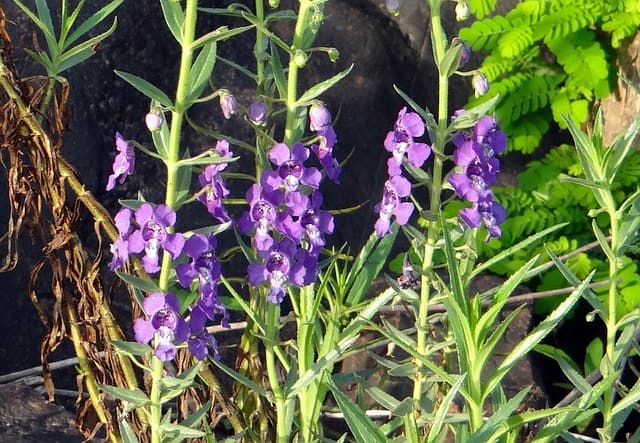
Angelonia is a beautiful perennial that will compliment your Zinnias quite nicely. While the ‘Angelmist Purple’ is our personal favorite, you can also find Angelonia in pink, white, mauve, and blue, so you’ve really got a lot of choices based on the Zinnias in your garden.
Aside from color, they have a nice, bushy look and the flowers spike out up the stems, which stand tall and upright, ready to properly flank your beautiful Zinnias.
- Mature Size: Angelonia is typically 1 to 3 feet tall when fully mature, with a modest spread of 1-2 feet wide.
- Flowering: These plants tend to bloom between May to October, providing a good 4 to 6 weeks of flowers to grace your garden.
- Key Features: Tall, bushy, beautiful, and available in 5 colors for versatility in your arrangement.
2. China Aster – Callistephus chinensis
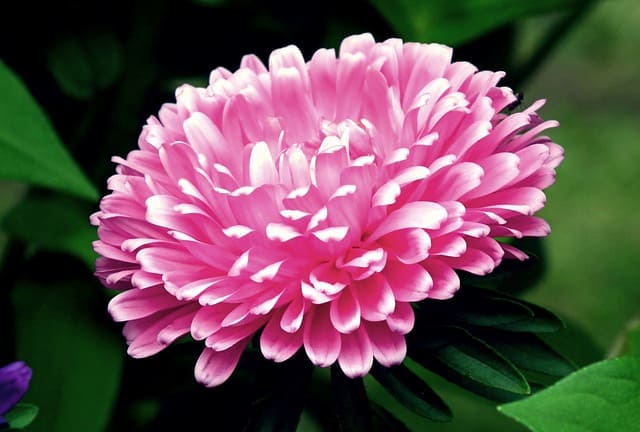
One of the showiest annuals around, China Aster provides puffy blooms which come in red, blue, white, purple, and pink, and the thin-petaled flowers measure between 3-5 inches each. While they grow to a medium height, their spread is very modest, allowing you to plant them in spacings of about 12 inches apart.
This lets you have a lot of fun and get really granular with your arrangements, so consider adding a little China Aster to your garden – with the brilliant blooms and tiny space requirements, it’s both versatile and absolutely stunning!
- Mature Size: China Asters have mature height between as little as 8 inches to as high as 3 feet, with a diminutive spread of 12-18 inches wide.
- Flowering: These plants typically bloom in the late summer and last well into the fall.
- Key Features: Tiny spread that produces big, beautiful, and multicolored flowers that you can plant as little as 12 inches apart, making for an excellent border display.
3. Cucumber – Cucumis sativus
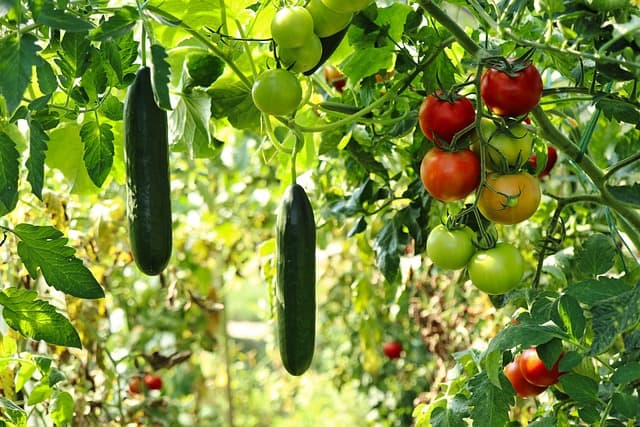
Some people don’t know this, but Zinnias are quite good at keeping away pests such as whiteflies, thrips, and aphids, providing you with an opportunity to sneak in a few edibles that bring on the aesthetics along with the taste! Cucumber is an excellent option – just don’t forget to install a trellis.
Without one, your Cucumber vines may well try to find purchase on your zinnias, but as long as you prepare then you have the makings for a garden that feeds both the body and the soul!
- Mature Size: Vine cucumbers may grow as high as 6 feet, while the bush variety will get up to 2 -3 feet tall. Both have a spread of approximately 2 to 3 feet.
- Flowering: Cucumbers actually produce golden flowers that will thrive throughout the year, disappearing at the signs of the first frost.
- Key Features: Lovely, delicious, and a very practical choice with the pest-deterrent properties of your Zinnias.
4. French Marigold – Tagetes patula
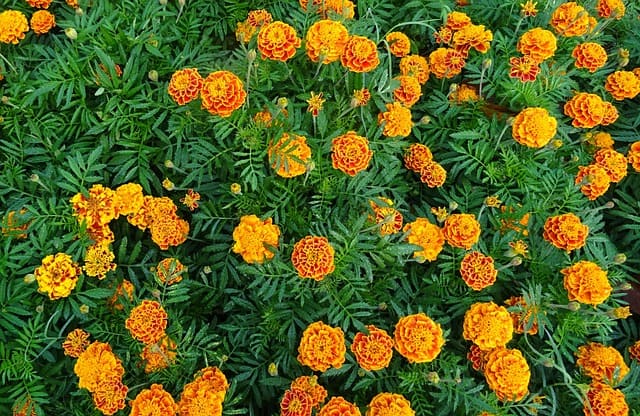
For a striking contrast to go with your Zinnias, you could do a lot worse than French Marigolds. Available in rich yellow, vibrant orange, and a deep, distinctly-bordered red, Marigolds have wide, multi-petaled blooms that will definitely turn a few heads.
Just be sure to go with the hybrids if you don’t want a scent. Non-hybrid French Marigolds are beautiful, but their fragrance is a ‘love it or hate it’ affair that has been compared to wet hay or straw.
- Mature Size: These petite plants have a mature height falling between 6 inches up to 2 feet tall, with a spread of 6 – 10 inches.
- Flowering: French Marigolds typically start showing off their blooms in early spring, right up until the first frost.
- Key Features: Small in size, big on beauty, and once they are planted they require very little care.
5. Licorice – Glycyrrhiza glabra
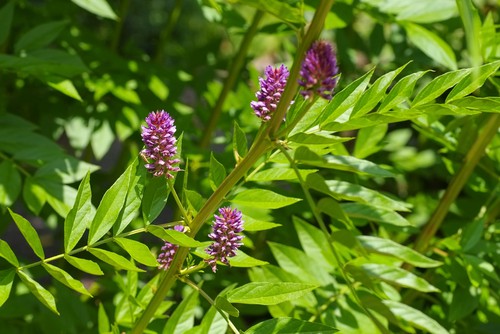
Speaking of smells that you love or hate, licorice is another favorite for planting with zinnias that you can use to create a lovely silver border with that wonderful licorice scent. As with cucumber, a bit of trellis work is going to be important, but the silvery flow that will border your zinnias is well-worth the time!
- Mature Size: Licorice grows up to 18 inches tall with a spread of up to 3 feet.
- Flowering: Bluish-purple flowers will start appearing in midsummer and will last about 2 months.
- Key Features: Practical usage if you’re growing herbs with your Zinnias or simply want a silvery border that sports bluish-purple blooms for 2 months every year.
6. Lisianthus – Eustoma grandiflorum

Lisianthus is a hardy plant that grows wild in the western United States. Due to it’s environment, this plant has developed somewhat waxy blooms that come in pink, purple, white, blue, and our favorite – bicolored. Definitely a fine compliment for your zinnias that will give you a lot of love for very little work!
- Mature Size: Lisianthus has a mature height of 1 – 3 feet with a spread of approximately 6 to 12 inches wide.
- Flowering: If you keep them deadheaded, your Lisianthus plants will bloom reliably from July to the first frost of the year.
- Key Features: Bicolor varieties are truly stunning and these hardy plants are quite easy to raise.
7. Mexican Sunflower – Tithonia rotundifolia
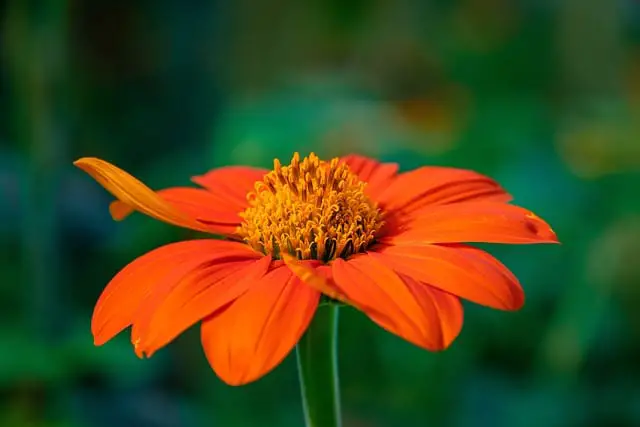
While standard Sunflowers will work with Zinnia, Mexican sunflowers really bring the color. When in bloom, you’ll get daisy-like flowers in orange, red, or yellow, and each one of them has a yellow center as well. Once planted, they’re hardy, too, as these beauties are drought resistant!
- Mature Size: Mexican sunflowers can grow to be 4 – 6 feet tall with a spread that is 3-4 feet wide.
- Flowering: Expect to see lovely, 3-inch flowers appearing in midsummer and lasting until the first frost.
- Key Features: Vibrant colors and tall enough to make a fine backdrop for your Zinnias that will require very little care on your part.
8. Occold Shield Geranium – Pelargonium Hortorum Occold
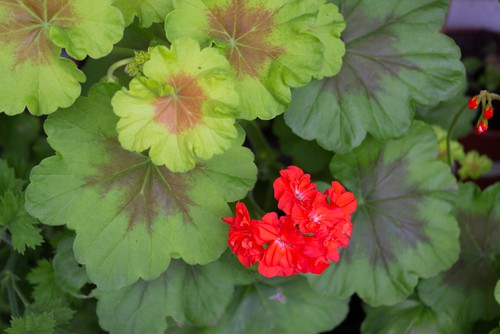
With golden-yellow or yellowish green leaves, topped with rich orange-red blooms, the Occold Shield Geranium is a lovely companion plant to host with your zinnias.
They’re bushy, but compact, and quite beautiful and as an added bonus, if you have local deer then you won’t have to worry – they don’t like to eat it!
- Mature Size: Occold Shield Geraniums are small plants, with a height of no more than 12 inches tall, and a spread approximately 9 inches wide.
- Flowering: You’ll see the distinctive orange-red flowers blossoming in the early summer and they should last until autumn.
- Key Features: Short but sweet, these long-blooming lovelies make excellent companion plants that will contrast your zinnias nicely.
9. Ornamental Salvia – Salvia officinalis
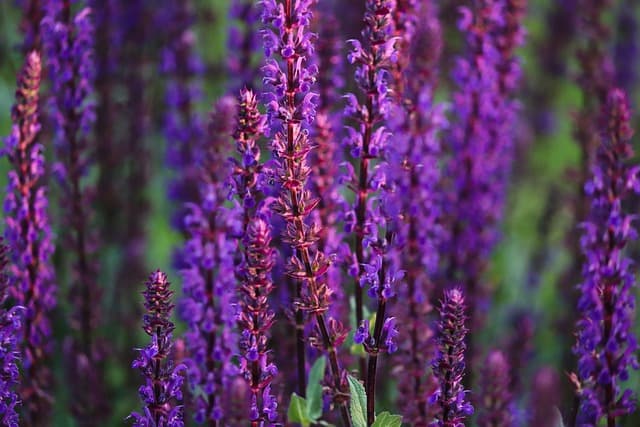
Also known as ‘Sage;, Ornamental Salvia is another good addition to your zinnias and while we’ve listed standard salvia, you really have quite a lot of choices.
These perennials are hardy and there are colors that will fit for any garden. Some varieties, such as ‘fruit scented Sage’ can even add a nice olfactory element to your display.
If you like to grow herbs with your zinnias, however, you can always go with the officinalis variety as it has many medicinal uses and also brings lovely purple flowers into your garden mix. It’s always nice to have a few practical plants mixed in with your displays, so Salvia is definitely one to consider.
- Mature Size: Salvia officinalis will grow about 2 feet tall with a spread of 2 – 3 feet wide.
- Flowering: This variety of Salvia blooms in late spring until early summer and is quite attractive during this time for butterflies and hummingbirds!
- Key Features: Pretty and practical, Salvia attracts pollinators to liven up your garden and it’s quite easy to care for.
10. Red Dahlia – Dahlia coccinea

Beautiful and tolerant of mildew, rain, and heat, Red Dahlias make a great companion for zinnias and even come in a number of varieties. While chiefly variant shades of red, with the coccina variety you get a stunning scarlet flower with bright yellow pistil arrangements in the center. .
There are quite a lot of cultivars, so if you want to add some striking reds to your zinnia arrangements, then red dahlias are definitely a fantastic choice!
- Mature Size: Red Dahlias of the coccinea variety will grow 2-5 feet tall, with a 1-foot wide spread.
- Flowering: Late bloomers, you can expect flowers to be fully bloomed from August until the first frost.
- Key Features: Rich color and with numerous cultivars available, there’s a little something in red for every taste.
Some closing comments on companion plants for your zinnias
Today we’ve taken a closer look at the top 10 zinnia companion plants and you’ve definitely got a lot of options. Zinnias aren’t just beautiful, but they can also provide a little protection for a vegetable garden, making them one of the more versatile options to host at your home.
So, be sure to mix things up a little if you like homegrown foods – with zinnias and the right companions, it’s just about a perfect match!
Frequently Asked Questions
Can zinnias grow next to tomatoes?
Yes! Zinnias and tomatoes make great companions, as the zinnia will help to keep pests away from them and provide a striking border for your practical garden.
Can marigolds be planted with zinnias?
Yes. If you fancy marigolds, you may certainly plant them with your zinnias and the two plants play quite well together. Both are fairly low maintenance and will not compete for available nutrients, instead growing in harmony like the good neighbors that they are in Nature.
Are zinnias good for a vegetable garden?
Yes, zinnias and vegetable gardens are an aesthetically pleasing and truly practical choice. The zinnias help to keep insects at bay and they also attract pollinators, benefiting all of the plants in your garden arrangement!

Hey, I’m Lisa and I’ve been an avid gardener for over 30 years. I love writing, talking and living in the garden! Feel free to connect with me on my socials below

